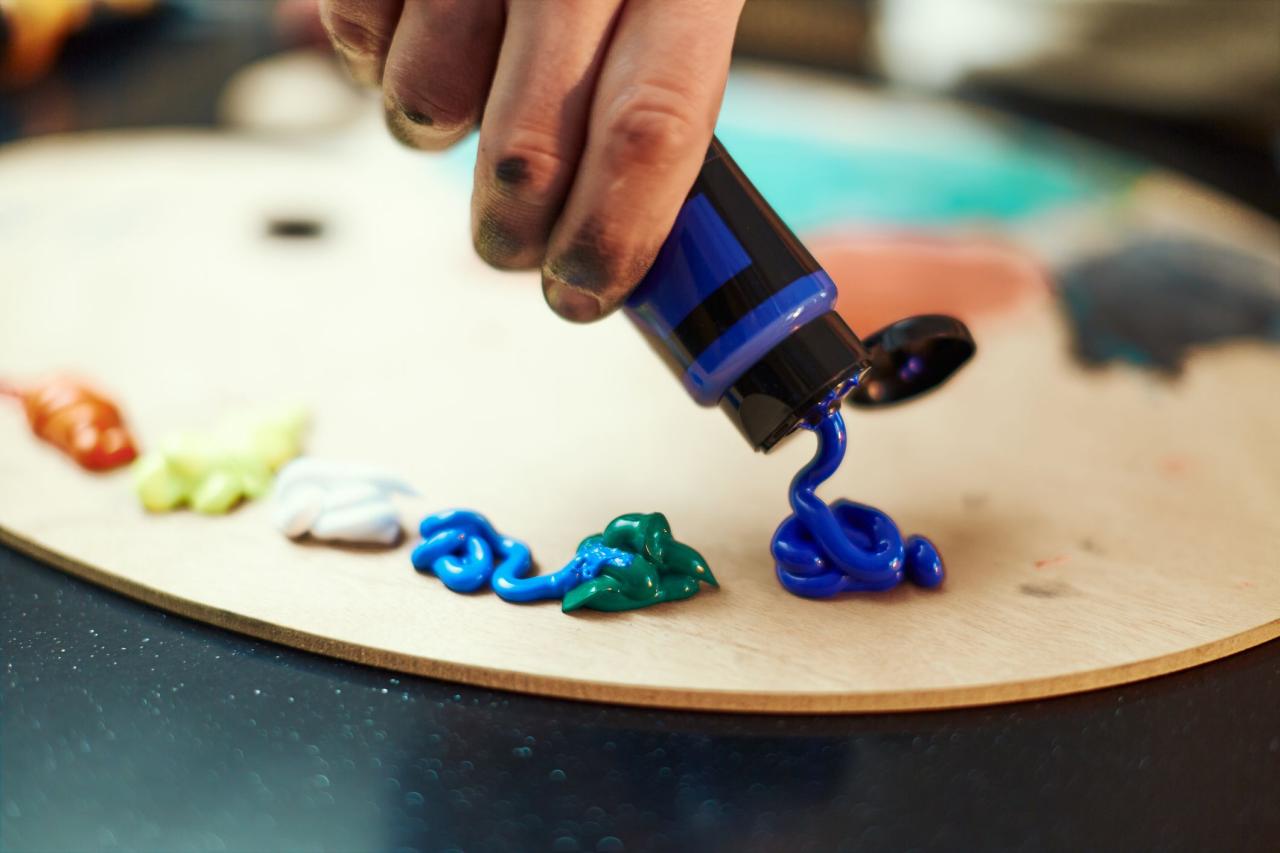How to Start Painting with Acrylics: Tips for Absolute Beginners – How to Start Painting with Acrylics Tips for Absolute Beginners is your gateway to diving into the colorful world of acrylic painting. Whether you’re an aspiring artist or someone just looking to explore a new hobby, this guide aims to equip you with the essential tips and techniques to get started. From understanding the basics of materials to exploring various painting techniques, we’ve got you covered to ensure your journey is both fun and fulfilling.
Acrylic painting is a versatile and accessible medium that allows for endless creativity. With a quick-drying time and vibrant colors, it’s perfect for artists of all levels. In this guide, you will learn about the necessary supplies, practical tips for your first painting, and how to overcome common beginner challenges. Get ready to unleash your creativity and express yourself through art!
Have you ever found yourself scrolling through social media, only to wonder how so many people manage to create engaging posts that capture attention? The world of online content can seem overwhelming, but fear not! Today, we’re going to explore some key strategies to craft interesting posts that not only resonate with your audience but also keep them coming back for more.
First, let’s talk about the importance of storytelling. Humans are inherently drawn to stories. We connect with them on an emotional level, and they help us relate to experiences that may be different from our own. So, when creating your posts, think about how you can weave in a narrative. Share personal anecdotes, challenges you’ve faced, or lessons learned along the way. This approach not only makes your content more relatable but also adds a layer of authenticity that readers appreciate.
Next, consider the power of visuals. In today’s fast-paced digital landscape, a captivating image or video can speak volumes. A well-placed photo can catch the eye and encourage readers to engage with your content. Use high-quality images that are relevant to your post, and don’t shy away from using graphics or infographics to illustrate your points. Remember, a picture is worth a thousand words, and in the realm of social media and online content, it can make all the difference in grabbing attention.
Now, let’s dive into the significance of a catchy headline. Your title acts as the gateway to your post – it’s the first thing readers see, and it needs to entice them to click and read further. A good headline should be intriguing and give a hint about the value the reader will gain. Think about using numbers, questions, or bold statements to generate curiosity. For example, instead of a bland title like “Tips for Better Writing,” try something more engaging like “10 Writing Hacks That Will Transform Your Content Game!”
Furthermore, let’s not forget about the importance of engaging with your audience. Invite readers to comment, share their thoughts, or ask questions. This interaction not only builds a community around your content but also provides valuable feedback and insights that can help you create even better posts in the future. Responding to comments and fostering discussions can turn a simple post into a lively conversation that adds depth to your content.
Another key component to making your posts more enjoyable and easy to understand is the use of clear and concise language. While it can be tempting to use jargon or complex vocabulary, remember that simplicity often resonates best with readers. Aim for clarity in your writing; break down complex ideas into digestible bits, and use short paragraphs and bullet points to enhance readability. This approach ensures that your audience can easily follow along and absorb the information you’re sharing.
Additionally, consider injecting your personality into your content. Whether it’s through humor, enthusiasm, or a unique perspective, letting your voice shine through can make your posts stand out. Readers are looking for authenticity, and when they see the human side of you, they’re more likely to connect and engage. Don’t be afraid to express your opinions and share your passions; it’s what makes your content uniquely yours.
Moreover, consistency is key when it comes to content creation. Establishing a regular posting schedule helps build anticipation among your audience. Whether it’s weekly, bi-weekly, or monthly, find a rhythm that works for you and stick to it. Consistency not only keeps your readers engaged, but it also demonstrates your commitment to providing valuable content.
Lastly, always keep learning and adapting. The digital landscape is constantly evolving, and staying informed about trends and changes can help you refine your content strategy. Pay attention to what types of posts perform well and what your audience responds to. Don’t be afraid to experiment with different formats, styles, or topics. The more you learn, the better you can tailor your content to fit the needs and interests of your audience.
In conclusion, creating interesting and engaging posts is both an art and a science. By incorporating storytelling, visuals, catchy headlines, audience engagement, clear language, your unique personality, consistency, and a willingness to learn, you can craft content that resonates with your readers. So, the next time you sit down to create a post, remember these strategies and watch as your content transforms into something truly captivating. Happy writing!
FAQ Resource: How To Start Painting With Acrylics: Tips For Absolute Beginners
What materials do I need to start painting with acrylics?
You will need acrylic paints, brushes, a palette, canvas or acrylic paper, and water for cleaning brushes.
Can I mix acrylic paints?
Yes, acrylic paints can be mixed to create new colors, and you can also mix them with water for different effects.

How do I clean brushes after using acrylic paint?
Clean brushes with water immediately after use. If the paint dries, you may need soap or a brush cleaner.
How long do acrylic paintings take to dry?
Acrylic paints dry relatively quickly, usually within 15 to 30 minutes depending on the thickness of the application.
What’s the best way to store acrylic paints?

Store acrylic paints in a cool, dry place and ensure the caps are tightly closed to prevent drying out.






